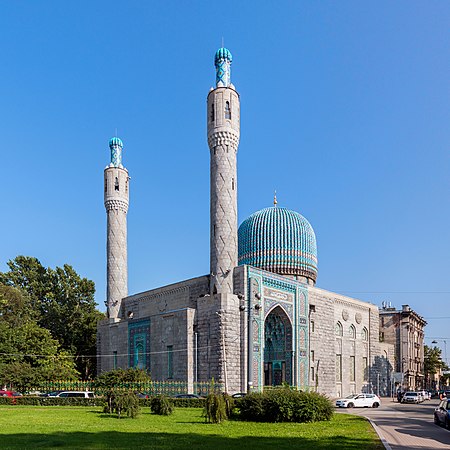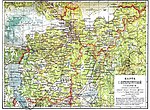Saint Petersburg Mosque

The Saint Petersburg Mosque (Russian: Санкт-Петербу́ргская мече́ть), when opened in 1913, was the largest mosque in Europe outside Turkey, its minarets 49 meters in height and the dome is 39 meters high. The mosque is situated in downtown St Petersburg. It can accommodate up to five thousand worshippers.The founding stone was laid in 1910 to commemorate the 25th anniversary of the reign of Abdul Ahat Khan in Bukhara. By that time, the Muslim community of the Russian then-capital exceeded 8,000 people. The projected structure was capable of accommodating most of them. The architect Nikolai Vasilyev patterned the mosque after Gur-e-Amir, the tomb of Tamerlane in Samarkand. Its construction was completed by 1921. Worshippers are separated by gender during a worship service; females worship on the upper floor, while the males worship on the ground floor. The Mosque was closed to worshippers from 1940 to 1956.
Excerpt from the Wikipedia article Saint Petersburg Mosque (License: CC BY-SA 3.0, Authors, Images).Saint Petersburg Mosque
Кронверкский проспект, Saint Petersburg Petrograd Side (Посадский округ)
Geographical coordinates (GPS) Address External links Nearby Places Show on map
Geographical coordinates (GPS)
| Latitude | Longitude |
|---|---|
| N 59.955247 ° | E 30.323896 ° |
Address
Соборная мечеть
Кронверкский проспект 7
197046 Saint Petersburg, Petrograd Side (Посадский округ)
Saint Petersburg, Russia
Open on Google Maps











